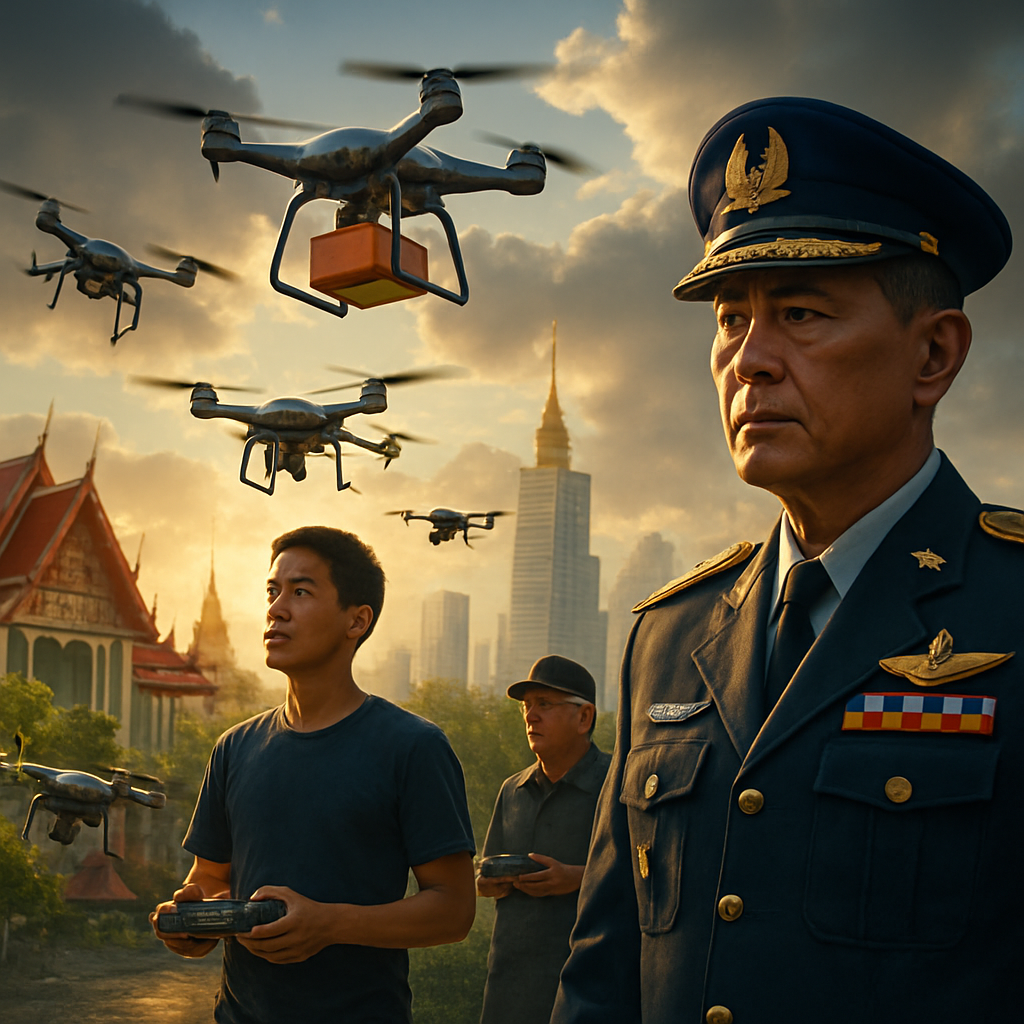In the ever-evolving world of aerial technology, Thailand is taking significant strides to streamline and promote drone operations within its borders. Spearheading this initiative, Air Chief Marshal Manat Chavanaprayoon, Director of the Civil Aviation Authority of Thailand (CAAT), underscores the pivotal role of the agency in regulating the efficient use of drones across the nation. He enthusiastically shares the progress made through the UAS Portal system, a state-of-the-art online platform designed to simplify and accelerate the registration process for both drone operators and their high-flying devices.
This innovative portal serves as a one-stop-shop, offering extensive guidance for enthusiasts and professionals alike who are interested in exploring the skies with their drones. Manat remarks on the foresight of the platform, envisioning a future where it will adeptly manage drone airspace, ensuring a seamless integration of drones into the national landscape.
One of the most exciting developments on the horizon is CAAT’s collaborative effort with various sectors to forge a comprehensive “Drone Master Plan,” strategically crafting a roadmap that will chart the course for Thailand’s drone industry. This ambitious blueprint will address critical elements including policy formation, legislative frameworks, personnel development, infrastructure readiness, alongside the pivotal aspects of safety, national security, and data protection, ensuring a well-rounded and sustainable drone ecosystem.
This year marks the commencement of an important milestone as CAAT gears up to certify training centers and drone pilot courses. These programs are meticulously designed to cultivate a new generation of savvy professionals, well-versed in the intricacies of aviation, legal stipulations, and the safe application of drone technology. With these certified credentials, aspiring pilots will be equipped to navigate the skies with expertise and confidence.
Fast forward to 2025 and CAAT is on a mission to integrate “urban delivery drones” into the hustle and bustle of daily life. Working in tandem with National Telecom Public Company Limited (NT), Thailand Post, Aeronautical Radio of Thailand, relevant government bodies, and eager private companies, CAAT is already orchestrating plans to test these futuristic delivery drones in the vibrant metropolis of Bangkok. The trials promise to be a spectacle, serving as a precursor to the potential issuance of delivery drone licenses to qualified private operators.
Manat’s vision is clear – to pave the way for a drone-enabled future that promises to enhance logistics capabilities while ensuring safety and efficiency in the skies above Thailand. With careful planning and strategic collaborations, CAAT is poised to make aerial transport and drone operations a cornerstone of the country’s technological advancement, transforming the way goods are delivered, one drone flight at a time.


















I think what Thailand is doing is incredible! They’re really pushing ahead with this drone tech and leading the way.
But what about privacy issues? These drones could easily become surveillance tools without us even realizing it.
Privacy is always a concern, but it’s up to regulators to ensure there are laws protecting people’s rights.
True, Susan. It’s important for CAAT to address those concerns in their Master Plan.
I’m just excited about getting pizza delivered by drone! Imagine the possibilities!
Delivery drones could actually reduce CO2 emissions. Better for the planet than delivery scooters!
Exactly! Faster deliveries and helping the environment? It’s a win-win!
Until one of them drops your pizza on the street!
As someone who works in urban planning, I’m impressed by the thought given to infrastructure integration for drones.
I agree. It’s crucial for cities to adapt to new technologies to stay ahead.
But are these infrastructures really worth the investment with all those uncertainties?
Actually, Susan, proper planning can mitigate many of those impacts. The key is adaptability.
Wonder when they’ll introduce delivery to other parts of Asia? Or is this exclusive to Bangkok?
I’m skeptical if this will face resistance from people worried about job losses in delivery services.
Technology always displaces some jobs, but it also creates new ones in unexpected areas.
Valid point, but it’s still a rough transition for those affected.
I hope they allow tourists to use this drone system for sightseeing. Imagine seeing Bangkok from above!
How are they planning to ensure air safety, especially with so many drones in the sky?
I bet they’ll use something like an air traffic control system. It’s a huge task but not impossible.
They better! Last thing we need is sky-clogging traffic!
Back in my day, we delivered packages by foot. Good ol’ days!
Interesting how quickly we’re moving into what used to be sci-fi worlds!
Hoping this technology can be expanded to rural areas to aid in critical deliveries.
We could definitely use reliable delivery solutions out here. It’s often overlooked technology-wise.
If done right, Thailand could be setting a benchmark globally for drone regulations.
Also hoping they’re investing in eco-friendly drones. Important for sustainability.
As a pilot, I’m curious about how this will impact commercial aviation. Airspace is precious.
Drone tech is fascinating, but can it really handle the busy skies of Bangkok without accidents?